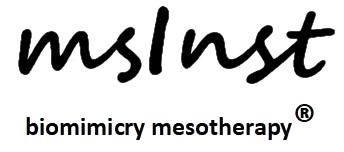EXOSOMES IN COSMETICS
Why mesoInstitute do not use exosomes in its formulas?

Why mesoInstitute do not use exosomes in its formulas? By current standards, exosome research is in a preclinical, exploratory phase, with most claims being speculative.
No Direct Evidence of Functional Activity
1.- Speculative Nature of Exosome Functions:
Many claims about exosome functions are based on correlations observed in experimental models rather than clear causative roles. For instance:
Exosomes carrying immune molecules (like MHC or cytokines) are suggested to influence immune responses, but the extent of their direct functional impact compared to soluble molecules or cell-bound interactions remains unclear.
Similarly, their role in gene transfer via RNA or DNA lacks consistent evidence showing that such cargo reliably alters recipient cell behavior in physiological conditions.
2.- Indirect Effects Are Misinterpreted as Direct:
Observed effects (e.g., gene expression changes in recipient cells) might result from other co-released vesicles or soluble molecules rather than the exosomes themselves.
Lack of Standardization in Exosome Preparation
1.- Heterogeneity in Isolation:
The methods used to isolate exosomes—such as ultracentrifugation, size exclusion chromatography, or precipitation kits—yield vesicle populations with varying purity and content.
Contaminants, such as other extracellular vesicles (microvesicles, apoptotic bodies) or soluble proteins, may confound findings.
2.- Variability Across Sources:
Exosomes from different cell types, or even the same cells under varying conditions, differ in cargo composition. This variability undermines the reproducibility of experimental outcomes.
3.- Lack of Quality Standards:
There are no universally accepted guidelines for defining what constitutes a pure, functional exosome population. Current methods rely heavily on surrogate markers (e.g., tetraspanins like CD63, CD81), which are not exclusive to exosomes.
Current Status: Speculation and Hurdles
1.- Immunology:
While exosomes are implicated in immune modulation, their exact role remains speculative without robust, reproducible evidence of direct functional impacts.
2.- Cellular Communication:
The same is true for their involvement in intercellular signaling. Observations often describe potential pathways rather than definitive mechanisms.

 Challenges Moving Forward
Challenges Moving Forward
1.- Functional Validation:
Future studies need to conclusively demonstrate that exosomes alone, independent of other vesicles or soluble factors, are responsible for observed biological effects.
2.- Standardization Efforts:
Developing standardized methods for isolating, characterizing, and defining exosomes is critical for meaningful comparisons across studies.
3.- Context-Specific Effects:
Understanding how exosome composition and function vary with the cell type, environmental conditions, and disease states will be key.
Conclusion
By today’s standards, the results with exosomes are inconsistent due to significant variability in production, sourcing, and handling processes. While exosomes have shown promising benefits in preclinical and early clinical studies for cosmetics, their outcomes can vary greatly from batch to batch because of the following:
Primary Causes of Inconsistency
Biological Origin: The cells used to produce exosomes (e.g., stem cells or fibroblasts) are not identical, and donor variability affects the composition of the exosomes.
Manufacturing Methods: Differences in isolation, purification, and storage can alter the bioactivity and stability of the exosomes.
Regulatory and Quality Gaps: Unlike pharmaceuticals, cosmetics are not subject to stringent regulatory oversight, leading to variability in product quality and efficacy across brands.
Non-Standardized Testing: No universal benchmarks exist for assessing exosome quality, purity, or potency.
 Implications
Implications
End-User Experience: The variability leads to inconsistent results for consumers, with some seeing benefits while others may notice little to no effect.
Industry Challenges: The cosmetic industry’s ability to provide reproducible, high-quality exosome-based products is still evolving. As a result, claims made by some products may not always align with their actual performance.
What Needs to Improve
To achieve consistent results, the industry must address standardization at all levels, including:
Cell sourcing: Use of well-characterized and traceable donor cells.
Manufacturing: Adoption of reproducible, scalable isolation and purification techniques.
Quality Control: Rigorous testing of each batch for particle concentration, composition, and activity.
Regulatory Oversight: Clear guidelines for the use of exosomes in cosmetics to ensure safety and efficacy.
Current State
While the science behind exosomes is exciting, consistency in results is not yet guaranteed, making it essential for consumers and professionals to critically evaluate the claims and quality of exosome-based cosmetic products.


